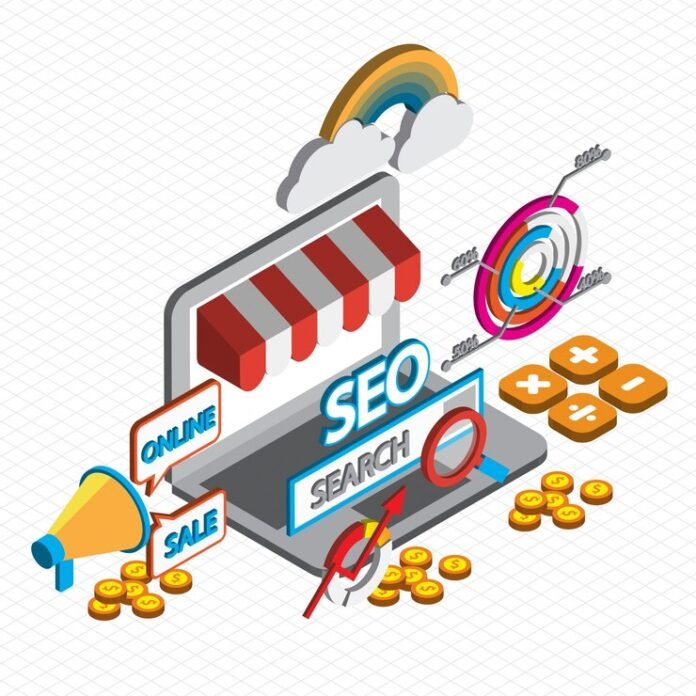Ecommerce SEO is the practice of increasing an online store’s organic ranks and exposure on search engines such as Google and Bing. SEO is vital for ecommerce sites since it increases traffic and drives purchases. When your online store ranks higher in search results, more customers will notice your stuff. This leads to increased sales over time.
Other advantages of employing SEO for ecommerce websites include the following
- It’s a cost-effective approach to reach your customers without paying for advertising.
- It promotes confidence and credibility for your brand, because people trust organic results more than purchased ones.
- It provides you a competitive advantage over other online stores that may not be optimised for SEO.
7 Tips for Successful E-Commerce SEO
Perform keyword research.
The first stage in an ecommerce SEO plan is to conduct keyword research. Keyword research is the process of determining which words or phrases (keywords) consumers use while searching for your products online. You must utilise the same keywords to optimise your product and category pages. As a result, they rank higher for those keywords, increasing traffic to your website.
Use the Keyword Magic Tool.
The primary categories of search intent are:
- Navigational: Users desire to locate a specific website or page. Examples include “Walmart login” and “Walmart plus.”
- Informational: Users desire to know more about something. For instance, “how much food to feed my dog.”
- Commercial: Users want to compare several products before making a purchase decision. For example, “Best Dry Dog Food.”
- Transactional: Users want to purchase something online. For example, “Buy dog food online.”
Use Google’s Search Features.
Google search capabilities such as Google autocomplete and related searches are fantastic sources of keyword ideas for ecommerce websites. Google autocomplete is a Google search tool that helps users complete searches faster when they begin typing. Simply put what your company sells into the search box. Then, Google will automatically recommend relevant keywords. These suggestions are based on what individuals are actively searching for (along with their location and previous searches). Consider including a space at the beginning of your query to generate even more keyword ideas. For example, your store does not sell a specific product. Alternatively, the keyword may belong to a competitor. However, with a little digging, you should have no problems.
Use Amazon’s Features
Like Google, Amazon features an autocomplete tool that displays popular searches linked to your product. Simply start typing, and you will receive ideas. Consider Amazon’s choices for “dog food” and take note of important keywords for your business. Then, use the Keyword Overview tool to further analyse them.
Browse subreddits.
Reddit is another platform where you may get good keyword suggestions for your ecommerce site. Go to Reddit and search for your product. For example, if “dog food” is typed into the Reddit search field. It will instantly return subreddits about your goods. This is precisely where your intended audience hangs out on the platform.
Use the E-commerce Keyword Analytics App.
Apps and websites collect data from the world’s leading retail websites, allowing you to uncover high-converting ecommerce keywords. For example, want to know which dog food-related keywords perform best on sites such as walmart.com, amazon.com, and bestbuy.com? Simply search on these applications, and you will be able to see a wealth of stats about your terms. This includes the total number of orders placed and the conversion rate.
Is there a difference between SEO in B2B and B2C e-commerce?
Though SEO in B2C and B2B e-commerce achieves the same result (more organic traffic), there are several significant differences:
- Target Audience: While B2C SEO focuses on individual consumers, B2B e-commerce SEO material must cater to a more formal audience because their clients represent entire organisations.
- Longer Buying Cycle: B2B is notorious for having longer purchasing cycles than B2C. This also indicates that your customer may require additional time, knowledge, and content before making a purchase choice.
- B2B SEO material is typically educational/informational in nature, whereas B2C SEO seeks to elicit a purchase response.
- KPIs differ between B2B and B2C since their goals are so diverse. B2B SEO success is defined by lead generation, conversion rate, revenue, and client lifetime value, whereas B2C SEO is measured by traffic and average order value.
An e-commerce SEO plan includes four main components
- Content
Optimise your content for relevant search terms, including your URL, H1 header, content, meta description, and title.
- Technical Setup
Optimise your web store’s technical aspects, such as HTTPS, mobile friendliness, page speed, indexation, XML sitemap (which serves as Google’s index), and so on.
- User Experience.
Google uses user data to determine which websites will rank and in what order. This covers time on the page, bounce rate, conversion rate, load time, and so on. Ultimately, they want to know if users can find what they’re looking for. Are you a credible source of information?
- Link-building
You should consider which internal links (from within your website) and external links (from other sources) you will link to. You should also maintain track of other resources that link back to you in order to establish authority. Choosing the correct sources or being mentioned as a resource by another organisation can help you build credibility and brand reputation.
What are the challenges of e-commerce SEO?
Many organisations miss the following problems while optimising their e-commerce SEO:
Lack of excellent content
The most serious issue with e-commerce SEO is that some sites rush through it and forget that it’s about more than just the quantity of content. It all comes down to content quality. Your product pages cannot simply be a copy-paste of the manufacturer’s description; they must be succinct descriptions complemented by images. For organisations working on B2B e-commerce SEO, it is tempting to check all of the technical requirements for good SEO while overlooking the most important component: unique content that gives value to users. Content is the most important ranking component for SEO and is required for a successful long-term plan.
Forgetting the technological setup.
Although content is king, don’t overlook your technical SEO setup. HTTPS, mobile friendliness, page performance, indexation, and XML sitemaps are commonly overlooked.
Contact Digital Cappuccino to know more about E-commerce SEO.





